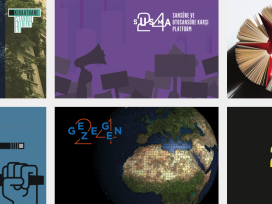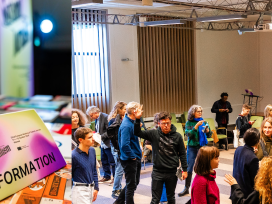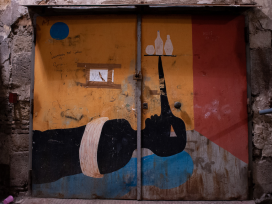Varlik celebrates its eightieth anniversary in 2013. Between the first issue, a 16-page black and white journal typeset by hand, printed only five years after Turkey’s switch to the Latin script, and the partially coloured, digitally published 112-page issue 1263, almost four generations have passed. Only five or six other journals in the Eurozine network are of a comparable vintage; most others were first issued after the war, and a good number of others are even more recent. The network journals, numbering around 80, have a vast diversity of backgrounds, but their missions and problems – particularly financing problems – are very similar. We had the opportunity to observe differences and similarities first hand and place our own journal and our cultural environment in a global perspective at the annual Eurozine assembly held in Hamburg in September 2012.
Financing European cultural journals
Like other types of cultural organization reliant on public funds, cultural journals throughout Europe have felt the impact of recession. In addition to funding cuts, journals are also having to negotiate the upheavals taking place in the print sector.
Through a European survey of financing for cultural journals, Eurozine takes stock of the situation of the network, in order to communicate its experiences internally and to others who hold a stake in European cultural policy today. [more]
Read the statements here:
Varlik, Turkey
Ord&Bild and Glänta, Sweden
Vikerkaar, Estonia
Wespennest, Austria
Sodobnost, Slovenia
Host, Czech Republic
Res Publica Nowa, Poland
Mute, UK
Intellectum, Greece
Blätter für deutsche und internationale Politik, Germany
The survey that
Varlik conducted among the editors of a dozen or so national or local journals, which have relatively distinct structures and content, gives us a profile of cultural publishing within Turkey. The feedback given by our colleagues abroad provides us a great opportunity to compare journal publishing in Turkey and around Europe.
There are almost no media companies left untouched by the financial crisis that has been going on since 2008. But those suffering the most appear to be cultural organizations that are more or less dependent on public funding. In other words, budget cuts brought by austerity policies hit those items that are at the bottom of the shopping list. The degree to which publishers of cultural journals are affected in this context differs according to the structure of the society they operate in.
For example, journals published in social welfare countries that have historically provided more support to cultural institutions (such as the Nordic and Baltic countries) feel the impact of the crisis less than their counterparts published in southern countries where the free market is more pervasive, regardless of the size of their respective countries.
Ord&Bild and Glänta, published in Sweden – which has a population of around nine million – continue to receive two-thirds of their annual expenses out of a two million euro budget of an agency established years ago to promote cultural production. Vikerkaar, published in the former Soviet state of Estonia with a population of two million, still receives support for 70 per cent of its expenses out of a one-and-a-half-million euro annual budget allocated to a similar institution in the 2000s.
On the other hand, Wespennest in Austria has had to reduce its annual number of issues from four to two due to a decline in advertising revenue, even when public funding (direct financial support or advertising) accounts for two-thirds of its budget. Cuts in postal rate discounts have had a serious impact on marketing costs.
Publishers in the former Eastern Bloc, which could benefit from public support to the extent that they practised self-censorship prior to the fall of the Iron Curtain and resist the expansion of the capitalist free market system adopted by their countries to the cultural sphere, see that their public support is on the decline with the financial crisis in Europe and the shift in social values. Take Slovenia’s Sodobnost, which has been published since 1933: The journal’s annual public support of 80,000 euros received from a public agency diminished as the new central right coalition in the country implemented austerity measures (meanwhile, the annual budget of this agency is no more than the cost of keeping two Slovenian soldiers in Afghanistan). Similar cultural funding cuts are seen in Poland and the Czech Republic: Host (Czech Republic), eighty per cent of whose budget is provided by the ministry of culture, says that the total funding available to journals has been reduced to half over four years, while the Polish ResPublica Nova, which receives seventy per cent of its budget from public sources, says that there are drastic reductions in funds available to journals.
Another example is the UK, where the welfare state has been replaced by the free market recently. Mute magazine, sixty per cent of whose budget was subsidized, lost annual public funding of 73,000 pounds, and has had to seek alternative financing and project-based funding to survive.
Although Greece is an EU member, its social structure is more akin to Turkey’s than to that of its northern neighbours, and the journal Intellectum says that the ministry of Culture provides funding in theory, but “pulling strings” is necessary to make use of this funding.
Unlike the German Blätter für deutsche und internationale Politik, which does not need financing thanks to an adequate revenue it enjoys, these journals and other Eurozine members that depend on public funding to survive are having to find different ways to cope with the financial difficulties accompanying the post-crisis environment and the new global context. Most believe that the time of the printed journal is not yet at an end, but moving on to digital publishing is needed to ensure the sustainability of their mission, which is to provide in-depth analysis and critique on matters that the mainstream media ignores or does not give enough coverage to.
There is a marked distinction between journal publishers in Turkey and their colleagues in the West: Publishers in Turkey are as much in need of public support as (if not more than) their Western counterparts, but all of them emphasize the fact that receiving government funding would mean losing independence. The fact that Turkish journals receive almost no public funding (discounting subscriptions of public libraries as a source of hidden support) may be due to both cultural policies and this “allergy” of civil society towards bureaucracy and politicians.
This is not without reason: even at a time when Turkey is supposedly on the path to becoming more “civilian”, two copies of all issues of periodical journals must be submitted to the local prosecutor’s office and six copies of every new book has to be submitted to the central public libraries within 15 days of printing; otherwise you are looking at a fine between 1000 and 5000 TL (between around 500 and 2200 euros). The (official) justification for the latter regulation is the preservation of printed publications as part of the national cultural heritage. You can guess the justification for the former yourself.
In the end, the cultural journal landscape in Turkey ranges from journals that are “printed when they find the money” to “prestige” publications by financial institutions or companies not related to journal publishing. The marked similarities between publishers in the West and in Turkey are their conviction that journals still serve a purpose in the age of the digital media and popular culture when even the mainstream media is receding, and their dependence on more or less volunteer (unpaid) work to survive.






